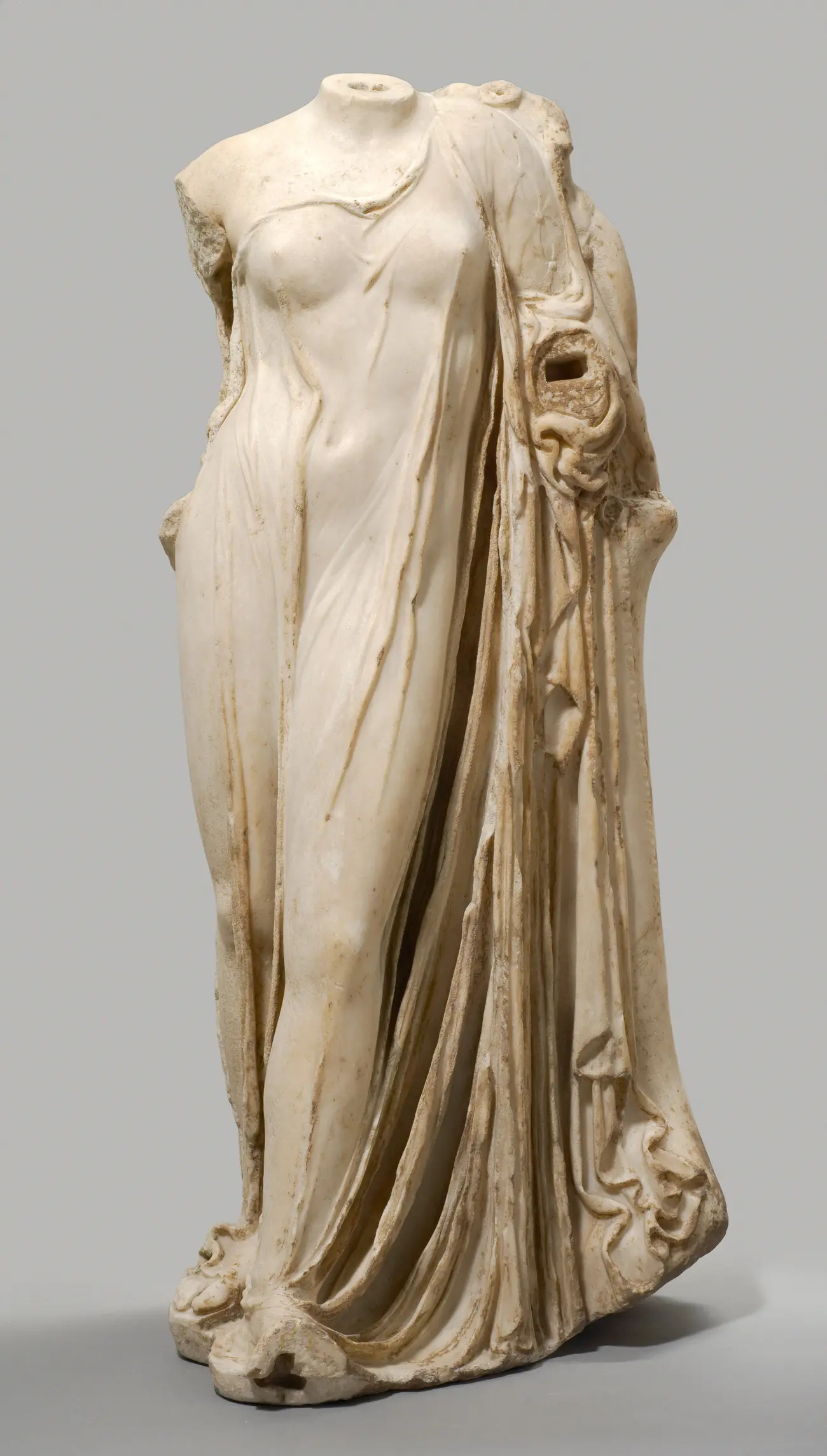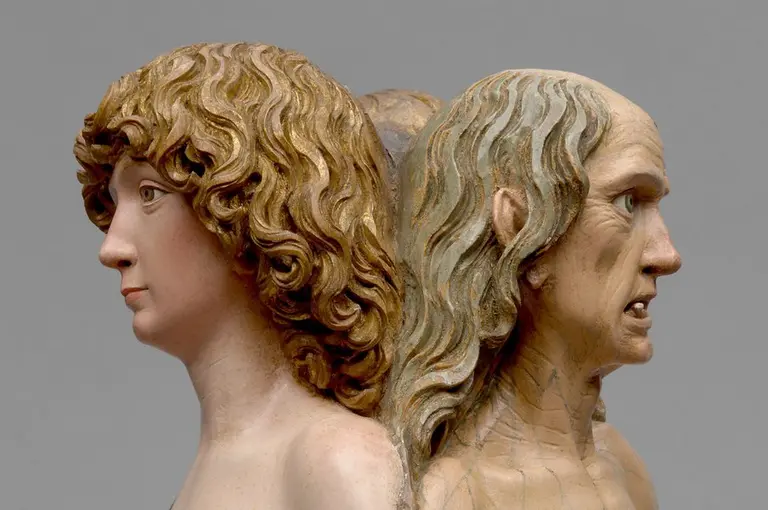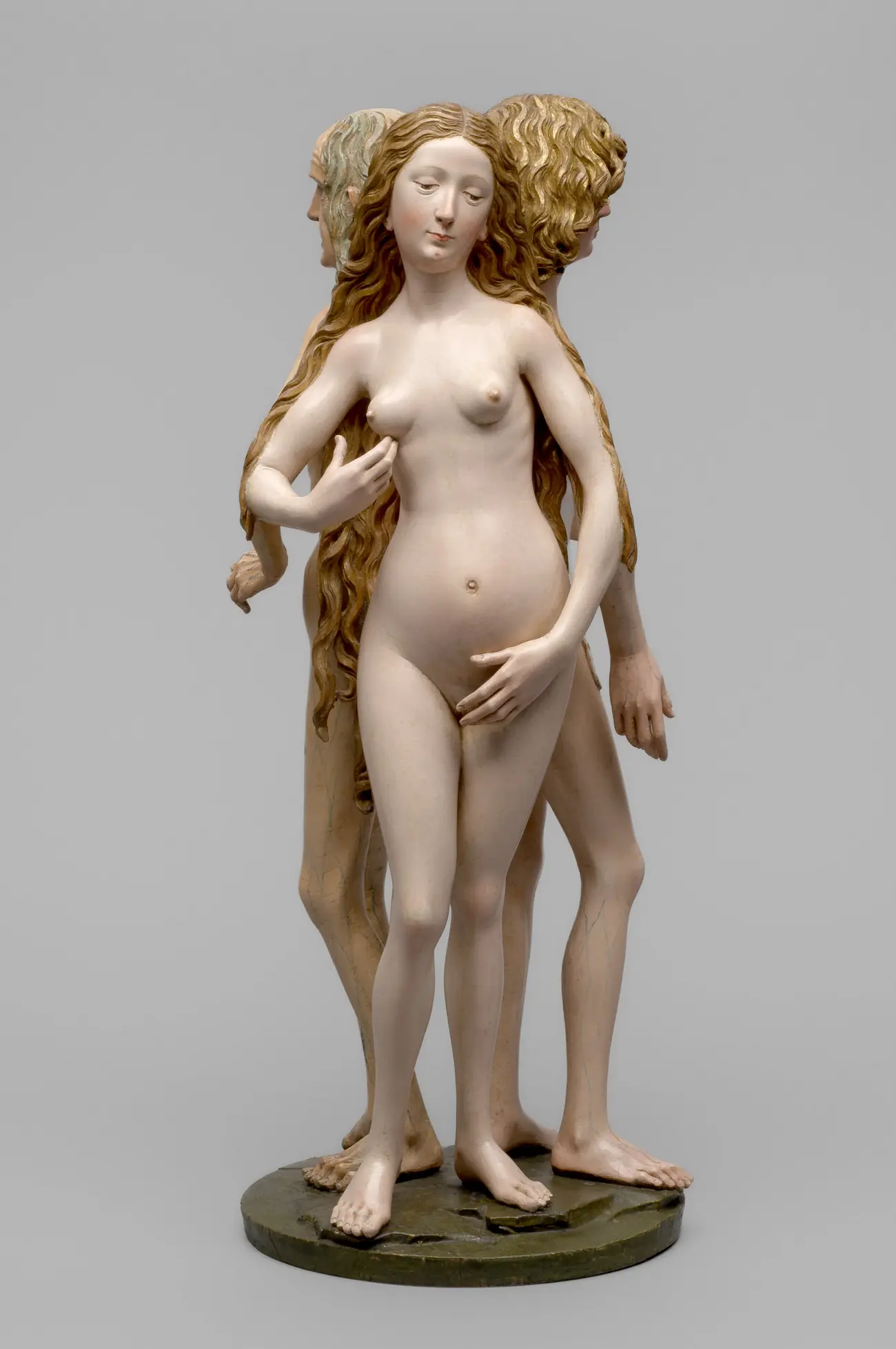In the same boat
Die drei Figuren, die aus einem einzigen Stück Holz geschnitzt wurden, stellen die Schönheit der Jugend und ihre Vergänglichkeit dar. Der Verfall des Körpers im Alter wird durch den Realismus der meisterhaften Farbfassung drastisch betont. Es ist unklar, ob die Gruppe ursprünglich zu einem größeren Kontext, z. B. einem Uhrengehäuse, gehörte oder bereits als eigenständige Kleinskulptur geplant wurde.
Title:
Allegory of Transience, so-called Vanitas Group
Artist:
Michel Erhart , ODER: (um 1440/45 - nach 1522)
Time:
ca. 1470/80
A young woman, a young man, and a second woman, elderly and at death’s door, can be observed from every angle. The old woman’s posture and the expression on her face seem to mirror the characteristics of the young man. The emaciated, aged body, the painted fleas, and mouldy green hair at the same time repel and fascinate.
Unable to see one another, they stand naked, equal, and back to back upon the same base.

Statue: Aphrodite und Eros ("Aphrodite d'Este"), Römisch, Hellenistisch, 1. Jh. v. Chr. (?)
Since antiquity there co-existed ambivalent views of old age: respect and contempt. Around 1500 youth, beauty, and virtue increasingly came to be regarded as one. The elderly, inexorably weaker, were consigned to irrelevance and became object of scorn.

Especially in northern and central Europe during the Renaissance, the transience of youth and beauty was addressed, often in drastic terms. The sculpture fashioned of lime wood was in the 19th century enclosed in a cabinet, which allowed only one figure to be seen through a narrow opening.
More from the series #The Face of Europe
Explore Kunstgeschichten
Discover varied essays on a wide range of artworks from our extensive collection.
